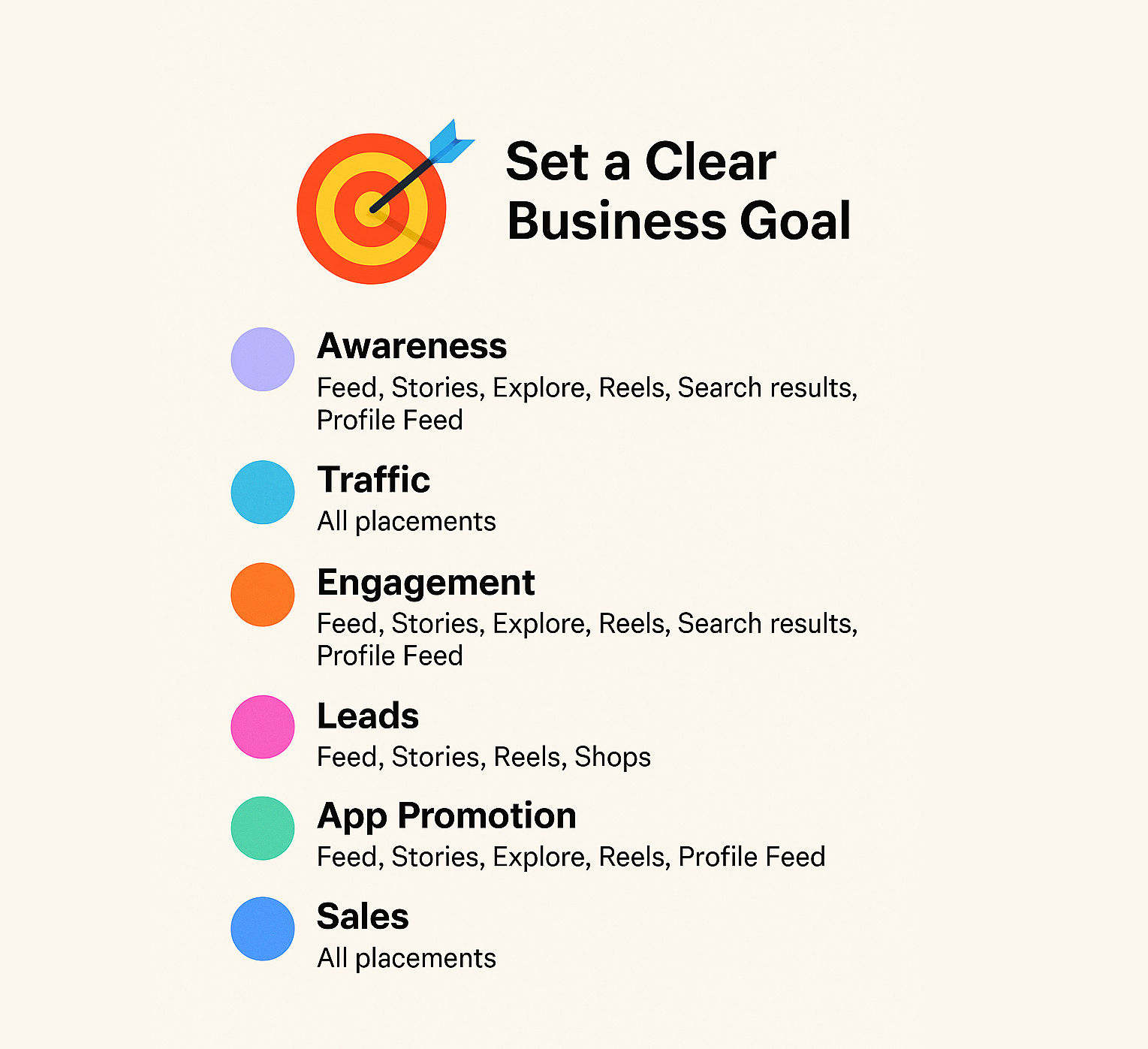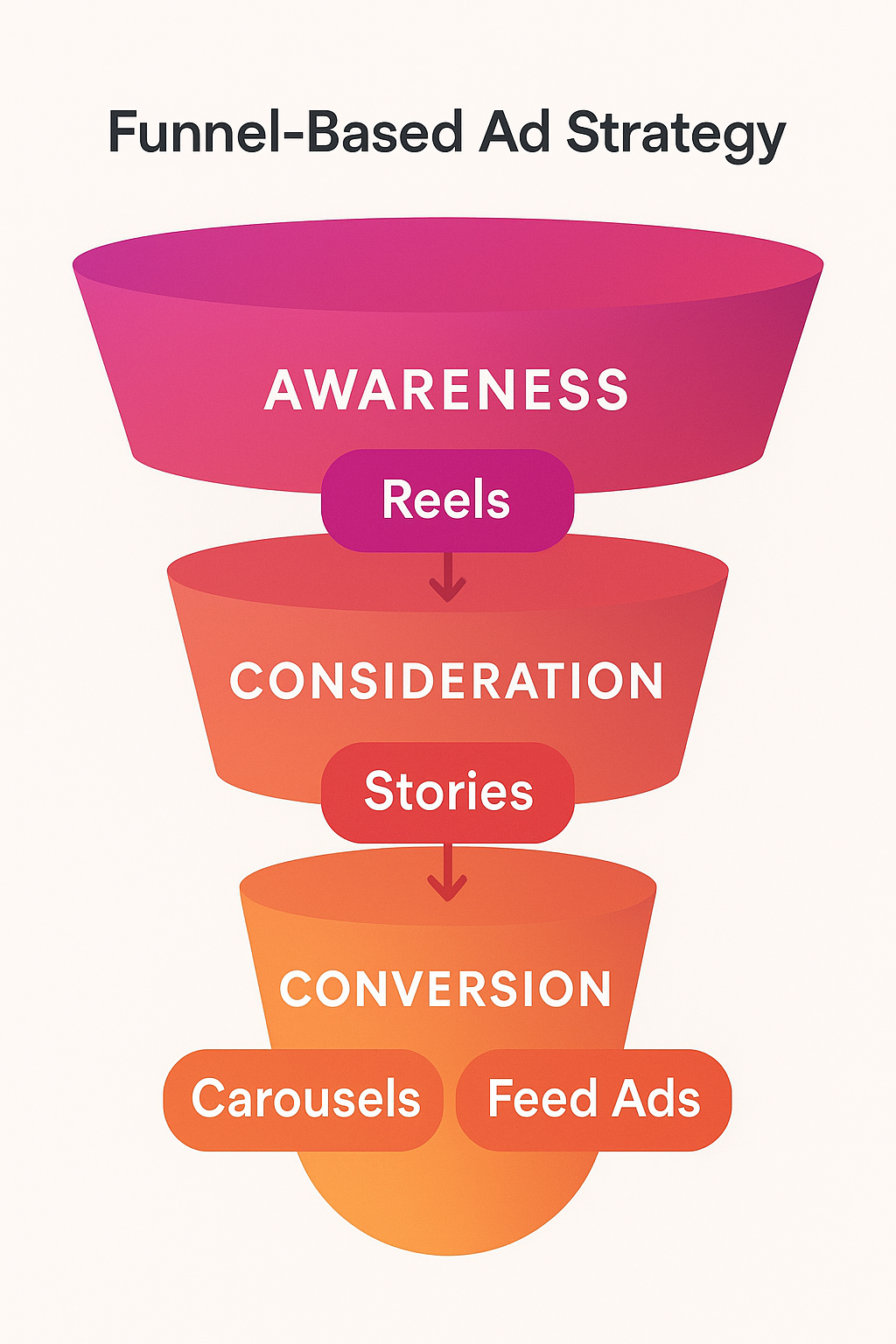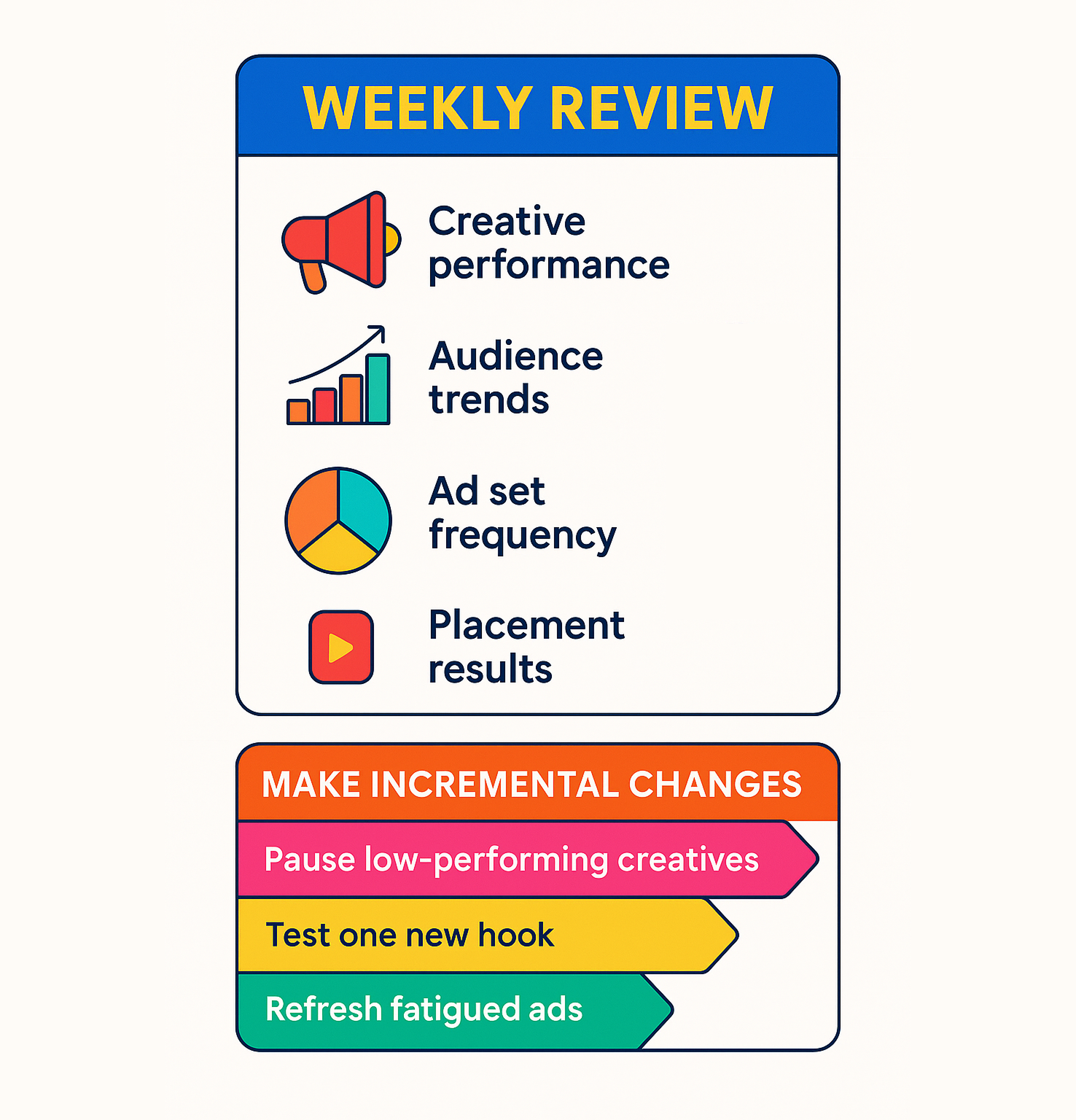Instagram isn't just a pretty place for photos anymore. It's a serious ad platform where smart strategy means real business results. Whether you're an e-commerce brand, service provider, or creator, getting Instagram ads right starts with structure. Here are the 7 essential steps you need to launch an Instagram ads strategy that performs.
1. Set a Clear Business Goal
Before you even open Ads Manager, ask yourself: What are we trying to achieve?
You'd be surprised how many campaigns fail before they begin — simply because the goal wasn’t clear. Meta’s ad system runs on objectives, and each objective determines which placements, bidding options, and optimization events are available.

Here are the core Instagram ad objectives and where they’re supported:
-
Awareness — Supported in Feed, Stories, Explore, Explore Home, Reels, Search results, and Profile Feed.
-
Traffic — Available across all major placements, including Shops and Search.
-
Engagement — Supported almost everywhere except Shops.
-
Leads — Works well across Feed, Stories, Reels, Shops, and more.
-
App Promotion — Supported in Feed, Stories, Explore, Reels, and Profile Feed.
-
Sales — Available across all placements, including Shops for a seamless e-commerce experience.
Choosing the right objective affects how your ads will be delivered and optimized. For example:
-
Want to increase product visibility? Awareness campaigns work well in Reels and Explore.
-
Need leads? Select the Leads objective and run ads across Feed, Stories, and even Instagram Shops.
-
Promoting an app? App Promotion runs in placements optimized for mobile engagement like Reels and Stories.
Still unsure which direction to go? Explore Meta Ad Campaign Objectives Explained for a detailed breakdown.
2. Define Your Target Audience (and Go Beyond Basics)
Here’s the truth: average targeting leads to average results.
Instagram’s power lies in precision. You can go far beyond age and gender — and you should. High-performing campaigns are built around user behavior and intent.
Start with three foundational audience types:
-
Core Audiences — built using Instagram's detailed targeting (interests, behaviors, and location).
-
Custom Audiences — made from people who have already interacted with your business (e.g., visited your site, engaged with your posts).
-
Lookalike Audiences — Instagram users who share characteristics with your existing customers.
But it doesn’t stop there. Smart advertisers go deeper:
-
Use engagement metrics to build audiences from Reels views, Story replies, or carousel swipes.
-
Exclude past purchasers to reduce wasted impressions.
-
Layer in behaviors and interests that signal intent, not just awareness.
- Use tools like Leadenforce to target followers of specific Instagram accounts — giving you access to niche audiences already aligned with competitor brands, influencers, or category leaders.
For a step-by-step audience-building playbook, check out How to Define a Target Audience for Marketing.
3. Choose the Right Format for the Right Moment
Instagram offers more than one type of ad — and using the wrong format can hurt your results even with the right message.

Here’s a breakdown of key formats and where they fit in the funnel:
-
Image Ads — Simple, clean, and great for retargeting or brand messaging.
-
Story Ads — Vertical, full-screen and immersive; ideal for flash sales, limited-time offers, and mobile-first engagement.
-
Carousel Ads — Let users swipe through multiple images or videos; perfect for showcasing product collections, testimonials, or step-by-step content.
-
Reels Ads — Highly discoverable and trend-driven; great for grabbing top-of-funnel attention with native, fast-paced video.
Choosing the right format also depends on your creative capacity. For instance, if you're running a seasonal product campaign, a carousel might let you highlight your product line more effectively than a single image.
Explore more format strategies in How to Use Instagram Reels in Your Marketing Strategy and How to Create Stunning Instagram Story Ads That Your Audience Will Love.
4. Create Ad Creative That Stops the Scroll
Instagram is a visual-first platform, and that means your creative can make or break your campaign.
To succeed, your ads must:
-
Catch attention fast — within the first 2 seconds.
-
Convey a message quickly — users won’t wait around to figure it out.
-
Look native — content that blends in with the feed or stories tends to perform better.
-
Include a strong CTA — "Shop Now", "See Offer", or even "Swipe Up" when applicable.
Here are types of creative that often outperform:
-
User-Generated Content (UGC) — relatable, authentic, and trustworthy.
-
Before-and-after visuals — powerful for transformation-based products.
-
Motion graphics or quick cuts — especially in Reels and Stories.
-
Text overlays — clear, legible messages that pop in a scroll-heavy environment.
Need a shortcut for creative ideas? Use these AI Text and Image Generators to develop fast variants for A/B testing.
5. Set a Smart Budget and Let the Algorithm Learn
Your budget affects more than spend — it influences performance, learning speed, and data reliability.
Here’s how to budget wisely:
-
Start with enough to get statistically significant results. Meta recommends aiming for ~50 conversions per week for optimization.
-
Avoid daily edits that reset the learning phase. Be patient — give campaigns 3–5 days to gather meaningful data.
-
Use automatic placements initially to let Meta optimize where your ad performs best (Feed vs. Stories vs. Reels).
If you see the dreaded "Ad Set May Get Zero" warning, your setup might be too narrow or underfunded. Use this guide to fix low-delivery Instagram ads before making drastic changes.
6. Track the Right Metrics (Not Just Vanity Stats)
It’s tempting to chase likes, saves, and shares — but those don’t always tie to business outcomes.
Instead, focus on metrics that measure performance and profitability:
-
CTR (Click-through rate) — indicates how compelling your creative and message are.
-
CPC (Cost per click) — shows how efficiently you're acquiring attention.
-
Conversion rate — reveals how well your landing page and offer perform.
-
Frequency — tells you how often the same person sees your ad (watch for fatigue).
-
ROAS (Return on ad spend) — the true north for scaling decisions.
Having trouble converting traffic into sales? Here’s a detailed breakdown of what to do when Instagram and Facebook ads aren’t converting.
And if you're not sure how to interpret your performance, read How to Analyze Instagram Ads Performance and Turn Insights into Action.
7. Optimize Weekly, Not Daily
Constant tweaking is a surefire way to slow down learning and hurt results.

Instead, adopt a weekly review schedule. Each week, review:
-
Creative performance — which visuals and messages are driving the most conversions?
-
Audience trends — is performance falling due to burnout or fatigue?
-
Ad set frequency — too many impressions per user can cause annoyance.
-
Placement results — some formats may quietly outperform others.
Then make incremental changes:
-
Pause low-performing creatives.
-
Test one new hook, message, or format at a time.
-
Refresh fatigued ads with new visuals or angles.
Remember, your best campaigns are often 3–5 iterations away from their full potential. Optimization is a process — not a quick fix.
Final Takeaway
Instagram ads aren’t plug-and-play. They require thought, creativity, and ongoing improvement.
If you treat your strategy as a living, evolving system — one built on clear goals, smart targeting, compelling creative, and sharp analysis — you’ll stand out in a crowded feed.
It takes work. But the brands who follow these 7 steps consistently outperform those who wing it.

